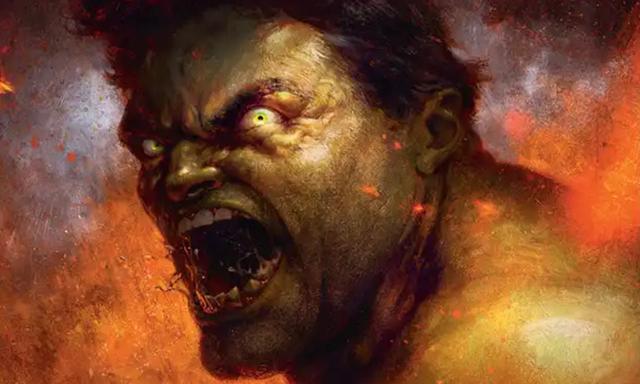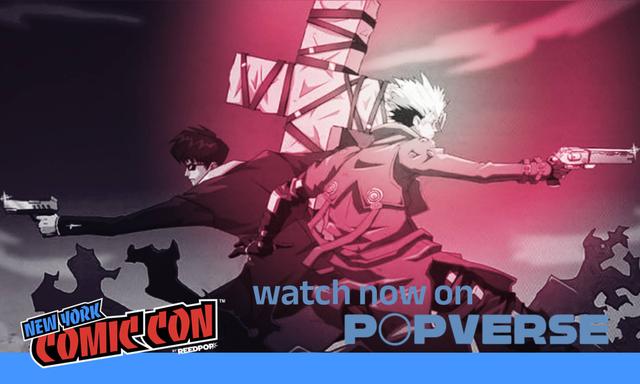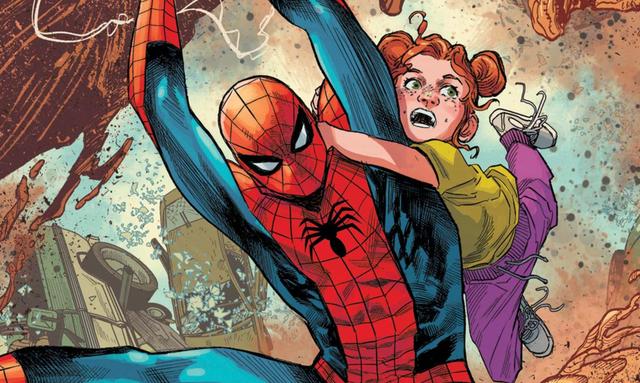If you click on a link and make a purchase we may receive a small commission. Read our editorial policy.
The Long Star War: Reframing Star Wars through the lens of real-world history
A historiography of Star Wars, as told by Asher & Saul Elbein

Editor-in-chief's note: What follows is a one of several engrossing articles Asher Elbein and Saul Elbein have been publishing as part of their newsletterHeat Death. Previously available only with a subscription, the authors have agreed to share this with us.
A long time ago, in a galaxy far, far away, a whole bunch of things happened, one more or less after another. One word for that is narrative. Another is history.
The canonical Star Wars currently spans 12 movies, three television series, and about 68 years of in-universe chronology. (The deuterocanonical and non-canonical Star Wars sprawls far beyond that, in expanded universes of books, comics, and videogames.) The first chronological film, The Phantom Menace, takes place some 32 years before the events of A New Hope. The last film at this time of writing, Rise of Skywalker, takes place 35 years afterward.
Over about 68 years of in-universe time, in other words, multiple Galaxy-wide wars are fought, massive political changes occur, and whole planets are wrecked. The sheer upheaval might seem unrealistic when packed into a single—and rather short—human lifetime. It’s a rather common complaint about Star Wars from certain quarters, in fact: how little time it seems to take in-story for situations to change utterly, and often for the worse.
But then, a lot can happen in a lifetime like that.
In our world, over the 68 years that passed after 1494, multiple European kingdoms snapped and snarled over the Italian peninsula, fueling an obscene spiral of conflict with the riches plundered from the New World. (Indeed, some of the conquistadores who tore bandit swaths across the Americas were veterans of the wars themselves.) By the conflict’s end, the nature of European warfare and finance had been transformed. The “High Renaissance” of Italy had been strangled: Rome itself had been sacked by unpaid mercenaries in an orgy of violence, killing thousands and turning the city into a backwater. And, of course, the merciless pillage of natural resources had been formalized — as well as, to some extent, stabilized — in the Americas as a matter of imperial policy.
Let’s look at the wars that took place among the stars, a long time ago and in a galaxy far away, how they began and how everybody, in the end, lost.
Perhaps that feels a bit distant—long ago and far away, as the saying goes. So consider instead the period from 1900-1968. The end of effective monarchies in Europe. Two world wars, which utterly reshaped the political and social landscapes of the globe. Massive diasporas fleeing genocides. Rampant political assassinations and botched assassination attempts. Convulsive economic collapses; startling leaps in technology; political instability and outbreaks of warfare on imperial margins, fueled by the nominally 'cold' warfare between an aggressive United States and the Soviet Union. All of this activity fueled — naturally — by the burning of cheap oil and coal. By 1967, large swaths of the world looked nothing like they did at the turn of the century. When destabilizing changes happen, they happen fast. When systems crumble, they tend to do so slowly, and then all at once. As an apocryphal quote attributed to Russian revolutionary Vladimir Lenin has it: "There are decades where nothing happens; and there are weeks where decades happen."
What, then, happens if you consider Star Wars as a work of history? Not an in-universe fan history, full of lore and extensively sourced (and rather tediously detailed) backstory. Let’s forget, for a moment, the great men and women of the Star Wars saga. Let us imagine ourselves as historians, forced to try and make sense of nearly seven decades of events. Let’s look at the wars that took place among the stars, a long time ago and in a galaxy far away, how they began and how everybody, in the end, lost.
The Galactic Republic

Let’s start before the fall, with the Galactic Republic. It’s a republican parliamentary democracy, ruled by the senators of many worlds, with a large bureaucratic apparatus and — of course — the Jedi, a protective caste of religious diplomats and warriors. Its territory reaches throughout most of the galactic core, though not into the marginal territories and frontiers of the Outer Rim.
The Republic is old: It has ruled for a thousand generations, as one old die-hard remembers, rotting in his forgotten hideaway like a post-World War II Japanese soldier. We don't know if that number is literal, a poetic kenning, or simply part of the accepted civic mythology — and that’s a statement of how much of the origin of the Republic and the Jedi caste is subject more to myth than history at this point.
With the state in deadlock, the galaxy is plagued by a de-facto power vacuum, which large corporate concerns are aggressively exploring the possibility of filling. When Episode I starts, the leadership of the Trade Federation is testing the Republic's authority by blockading member planets. Their attempt on the planet Naboo looks, from the outside, like a minor dust-up: some sort of wrangle over taxation disagreements over the starlanes. And at any other time, perhaps, that’s all it would have been, because the dispute over Naboo is the sort of problem that a strong state, run by able, responsive and — let’s say it — occasionally ruthless leaders, is able to defuse, by carrot or stick.
The bomb’s fuse was long, but it has been lit nonetheless, and no one is doing anything to shut it off.
When Episode I starts, they are testing the Republic's authority by blockading member planets. Their attempt on the planet Naboo looks, from the outside, like a minor dust-up: some sort of wrangle over taxation disagreements over the starlanes. And at any other time, perhaps, that’s all it would have been, because the dispute over Naboo is the sort of problem that a strong state, run by able, responsive and — let’s say it — occasionally ruthless leaders, is able to defuse, by carrot or stick.
But the Republic is long past that. This incident escalates quickly into a real political and constitutional crisis, one that Naboo’s own senator, Palpatine, uses to depose the existing executive leadership and grab himself the Supreme Chancellorship.
That’s not the sort of thing that happens in a healthy government, and the fact that the next decade passes in apparent peace doesn’t change that. The bomb’s fuse was long, but it has been lit nonetheless, and no one is doing anything to shut it off. The curtain goes down; the curtain comes up, and history is again in its pitiless motion on the Republic, in which things, its residents gradually realize, are seriously wrong.
Just how wrong? That becomes clear when several thousand solar systems launch a secession movement, forming a Confederacy of Independent Systems. It’s a catastrophic legitimacy crisis, one largely funded by large corporate interests like the Trade Federation and Corporate Authority, as well as arms manufacturers ('defense contractors') like the Geonosian droid makers. The stated reasons involve excessive taxation and government corruption, which is another way of saying that large power blocs in the Republic no longer feel it serves their interests to be a part of it.
In Palpatine, the man and the hour seem to meet.
In Palpatine, the man and the hour seem to meet. The incoming war is enough for Palpatine to get himself voted emergency powers. The Republic militarizes — or, more properly, is revealed to have already been militarized, complete with clone armies and fleets of starships. (The Republic, oddly, appears to have done without a draft or volunteer army this entire time.) All of this turns out to have been created in secret by executive action, without the Senate’s express authority. Nobody, save a few holdouts like Naboo’s newest senator, Padme Amidala, seems to mind, as war-fever sweeps the Republic. The Jedi caste, which has long held itself separate from the day-to-day politics of the Republic, claiming to occupy a haughty moral center — well, they militarize just as quickly and easily as everyone else, taking on officer positions in the new army.
For three years, the galaxy shudders in a conflict popularly called 'The Clone Wars.' Pre-manufactured droid and clone armies surge back and forth from planet to planet, trampling everything beneath their feet, keeping the conflict boiling at a fever pitch. All attempts to avert it or seek peace are sabotaged for the political gains of a few rulers. Everywhere, people die.
Viewed on the macro-level scale, this first Galactic Civil War is a huge, traumatic crisis for the Republic to recover from. And of course, it doesn’t. The soldiers loyal to Palpatine eventually crush the Separatist rebellion. We learn — though the galaxy at large never does — that he was the dark force behind the scenes all along: a one-man Illuminati conspiracy, a member of an ancient sect of Jedi called the Sith, who played both sides of the Civil War as part of a bid to win power.
But Palpatine is an opportunistic infection. The internal rot in the Republic is real, and not of his creation. It’s likely that something like this was probably coming, with or without him.
And yet in a way, Palpatine is also reformer: a Caesar wiping away a dysfunctional parliamentary system in all but name.
And yet in a way, Palpatine is also reformer: a Caesar wiping away a dysfunctional parliamentary system in all but name. Using the shock doctrine — the canny exploitation of crises to push through controversial policies while citizens are too emotionally and physically distracted to resist — Palpatine mounts an authoritarian coup. The military and bureaucratic corps are folded into a new Imperial order. He promises to reform the sclerotic edifice of the Republic, to bring back stability, peace, order. A traumatized galaxy is only too happy to go along. Made vulnerable by its own internal dissension and inflexibility, the Jedi caste is abruptly and viciously suppressed. A few—opportunistic, cowed, beaten—join the new regime.
The grimmest part? There’s much more continuity there than Jedi holdouts would care to admit. The transfer of power is smooth: the Republic had already become a galactic empire, almost without anybody noticing. All it took to make the transition formal was a man in charge of an army.
And when you’ve got an army, you have to keep finding uses for it.
The imperial march

If this all feels a bit on-the-nose, well, that’s Star Wars: a sometimes clunky, sometimes tragic refraction of America and American power. Which makes the series’ fractured chronology — a main story followed by prequels and sequels, and standalones scattered throughout — a kind of nonlinear twisted-mirror version of the last 50 years.
This first movement — a tale of war fever and authoritarianism in a sclerotic pseudo-democracy — was born out of the transition from the Clinton administration to the Bush years, a time of rising multinational corporate power, fears of terrorisim, stolen elections, and the crumbling of political norms.
For the next chapter, in real time, we jump to the late 2010s, a backdrop of broken politics, endless war, massive wealth transfers to the rich. A time, in other words, when the seeds planted during those previous administrations bore bitter fruit.
In two films from this era, Solo and Rogue One, we get a snapshot of life on the fringes of this rising militarist state. Both of them show how much of Palpatine’s 'security' - as with so many police states—is brutal theater. The first, Solo, takes us six years after the coup, to find an Empire in a curious state of transition. The Senate still exists, but is even more ineffectual than before. The anti-imperialists have been reduced to a rump faction, one which is free to declaim about liberty because they are powerless — as leading Senatorial families did for centuries under the Roman Empire.
The years of war were good for the mafias, as they were for the arms and drone manufacturers.
One consequence of the decay of the Republic had been a rise in privatized violence and organized crime. The years of war were good for the mafias, as they were for the arms and drone manufacturers. In the outer reaches of the galaxy — and maybe in the capital too — the mafias function as a para-state, or as contractors for the state, as the Palpatine regime finds it easier to cut deals with them then to actually enforce a power the center doesn’t have. The outer reaches of the Galaxy are now run almost entirely by criminal gangs and warlords, with the tacit acceptance of Imperial forces, with the occasional interruption of a Star Destroyer battle group to do some gunboat diplomacy or a punitive action.
As popular historian Patrick Wyman would write about America a couple years after Solo was released, the military adventures of the Republic/Empire had inevitably come home: the vast military machine employed to fight the Separatists has—inevitably—been turned on both the Republic citizenry and Separatist holdouts.
This is not, crucially, a machine that seems to be particularly effective for routine law enforcement. A Star Destroyer is like an World War II aircraft carrier, or a World War I battlecruiser — made for stand-up battles with other capital fleets, or raining devastation on enemy cities. It’s not any more useful for true peacekeeping than, say, an Iraq-surplus armored vehicle sold to the St. Louis police department. It is instead a symbol of threat and menace, without the legitimacy to back it up.
And so on the Imperial outskirts, a showy but largely ineffectual Empire provokes exactly the sort of response it’s poorly set up to fight...
And so on the Imperial outskirts, a showy but largely ineffectual Empire provokes exactly the sort of response it’s poorly set up to fight: an underground, fractious alliance ofwar veterans, blue blood anti-imperialists, and embittered members of the Jedi caste, making unlikely common cause. They are castoffs of old armies, unhappy with the new order, unable — unlike virtually the entire population of their galaxy, or ours — to go along to get along, making the best lives they can within the brutal confines of the Empire.
They are the perfect recipe, in other words, for a long-term insurgency.
We are now 18 years after the Palpatine regime took power: the time of Rogue One, released just after Donald Trump won the 2016 election. By now, the Empire’s fragile appearance of democratic legitimacy is finally cracked beyond repair. Scattered cells of an insurgency calling itself the Rebel Alliance — a bubbling and unstable mixture of criminals, defectors, religious zealots, utopians, and hardened veterans — are fighting Imperial forces on multiple fronts, despite violent factional disputes of their own. (They are tacitly supported by elements within the Imperial Senate, of course, which we might assume is jealous of the days, probably now beyond living memory, when they exercised effective rule.)
To combat this, the Palpatine regime goes big on the 'impressive battlecruiser' idea, investing in a symbolic (and ruinously expensive) super-weapon project aimed at shoring up its legitimacy, bankrupting whole planets in the process. Factional disputes and secret saboteurs in the Imperial ranks delay the project, but the super-weapon, code-named 'Death Star,' does successfully come online.
Watching the movies, if you’re going straight through, you hit a stark tonal shift here, as you are thrown back to the American '80s, to a post-Nixon parable in which a schizophrenic, bipolar America plays the role of both heroic rebellion and evil Empire.
In this movement, the core of the story, the Empire’s terror weapon is the bridge too far. The battle station’s deployment exposes the regime to the march of history, in which decades pass in days. An attempt by insurgents to steal the Death Star plans spirals into a full-blown fleet engagement above an Imperial research facility, and large chunks of the rebel fleet destroyed. Senators are forced to openly declare for the Rebellion. A New Hope opens with Imperial forces mobilizing to track down political dissidents like Leia Organa, and Palpatine secure enough in his position to dissolve the Senate and the last trappings of Republican order. A core Republic world, Alderaan, is destroyed in an act of calculated genocide. (The security of the Empire is not, after all, the security of its citizens.)
There the seemingly impossible happens: a handful of small fighter-craft, including some hick nobody named Luke Skywalker, manage to destroy it.
And so the Death Star, unsupported by the Imperial fleet and commanded by an admiralty convinced of their invincibility, goes off to mop up the hidden Rebel base. There the seemingly impossible happens: a handful of small fighter-craft, including some hick nobody named Luke Skywalker, manage to destroy it.
It’s a disaster: a tremendous loss of resources and military personnel, and a personal embarrassment for Palpatine, the admiralty, and the emperor’s personal enforcer, Darth Vader, who has been his lieutenant since his defection from the Jedi — a man, it’s said, who Palpatine played like a fiddle — in the last days of the Republic. But it isn’t a knockout blow — just another setback in a grinding progression, enough to signal that it is going to be a long and ruinous war. The Imperial fleet is still intact and strong. And now the insurgency is on the run.
The Empire Strikes Back. Four years go by. Four years of Imperial counterinsurgency efforts, four years of the Rebellion making gains here and losses there, four years of scattered battles and open revolt raging throughout the galaxy. Four years of civil war. The post-Clone Wars stability and pacification promised by the Palpatine regime turned out to be a myth: they have secured total, steely-eyed control of the edifice of the Republic, only to find that this had long since faded from relevance in the lives of the Galaxy’s citizens.
They can reign, in other words, but they can’t rule.
They can build new Star Destroyers, and staff them with conscript crews. They can flood the streets of many worlds with conspicuous conscript infantry. They can reign, in other words, but they can’t rule. As Organa — a rebel firebrand raised in a prominent Republican loyalist family — puts it, the more the Palpatine regime squeezes, the more systems slip through its fingers.
The mythology of Star Wars here adds a magical dimension: it tells us that Palaptine and Vader's subservience to 'the dark side of the Force' has rotted them from the inside out, sinking them into evil and — perhaps worse for the Galaxy — reactionary clumsiness. That’s likely true, but it doesn’t need to be: Palpatine’s end doesn’t require any more magic than the end of any other dictator: say, Nicaragua’s Samazoa, or Italy’s Mussolini, or Romania's Nicolae Ceaușescu.
Hemmed in, its options and legitimacy collapsing even as its sheer military power remains unparalleled, Palpatine’s regime gets desperate. In Return of the Jedi, we learn that they’re throwing yet more resources into the creation of a second Death Star. In a clever effort to draw out what remains of the Rebel fleet, his intelligence assets let slip that the new battle station is still unarmed, and only temporarily vulnerable. The insurgents find, when they arrive, that it is in fact fully operational, capable of sniping their scarce capital ships in rapid succession.
Palpatine is now an old man, bowed and weak with the strain of exercising sole rule over a Galaxy. It’s possible, on some level, that he just wants it to be over. That his great gamble of double or nothing is a subconscious attempt to put the whole burden down. Or, perhaps, he is simply so drunk on his own cleverness and successes that he no longer keeps his eyes on the risk. And so he makes the only fatal mistake an autocrat can make: in his confidence that he will win everything, he puts himself in a position where it is possible to lose everything.
Palpatine is now an old man, bowed and weak with the strain of exercising sole rule over a Galaxy. It’s possible, on some level, that he just wants it to be over.
Thus, in the skies above a miserable backwater little moon, the worst military disaster of the Palpatine regime occurs. The second Death Star is destroyed, taking with it a hefty chunk of the imperial fleet, the cream of Imperial admiralty, chief enforcer Darth Vader, and (apparently) Palpatine himself. History has struck again, and suddenly everything seems different.
There are a few more engagements, after that, including one last blowout fight with the insurgency over a dusty nowhere place called Jakku. But the Imperial government folds fast, which either suggests it had never been much of a government to begin with, or that — as in the transition from the Republic — the transition was more superficial than official propaganda might have you believe.
But while many systems accept the jurisdiction of the nascent New Republic, one faction of die-hards — a revanchist para-state of warlords and organized crime, wearing the symbols of Empire like the Ku Klux Klan waving the Confederate Battle Flag — scatters into the vastness along the Galactic borderlands, just as the remnants and veterans of the Clone Wars did. And just like that, the seeds of the next war, which is the same war, have been sewn.
The rise of

Let’s take a second to locate ourselves in the real world: it’s 2015, a few years after the collapse of the United States economy, near the end of the liberal dream that Obama would take American history and empire and unmake them, remake them, as he might help us remake ourselves. The country has seen economic collapse; the bailout of the banks that caused it; the rise of technocracy and its revelation as ultimately and ruinously hollow.
And, by the way, Disney bought Star Wars, adding it with the Marvel Cinematic Universe to their stable of escapist, wisecrack-heavy space operas. For their first installment, they return to the bones of what made the franchise popular — a galaxy at war, caught between rival rump states in a government in slow collapse.
In The Force Awakens, 32 years have now passed since the establishment of the New Republic, and 50 since Palpatine’s coup. The name is likely a conscious attempt to hearken back to those mythical glories of the golden age of the Old Republic, which few alive can possibly remember — rather than the dying, rotting edifice that incubated a schemer like Palpatine.
One of the important themes of the historiography of Star Wars is that conflict and instability are more the exception than the rule.
Decades of war seem to have impoverished the Galaxy. From ancillary materials like the Mandalorian, we can see that the frontier mentality of the Galactic outer rim has crept deeply into the rest of the galaxy. The successor state does not have nearly the fleet of its militarized predecessor; nor does it maintain the territorial expanse of either the Old Republic or the Empire. Jedi ideals and leadership help frame the civic religion and value set of the insurgency, but the order never manages to re-establish itself. Its sole remaining public practitioner, Luke Skywalker, has disappeared into self-imposed exile.
One of the important themes of the historiography of Star Wars is that conflict and instability are more the exception than the rule. Once the conflict begins, it feeds on itself. The losers in each round between what might be called the federalist and centralist factions retreat to the frontiers to hobnob with warlords and gangsters and plan their triumphant return to the center — while thousands more die.
And so, on the borders of Republic space lies the First Order, a military junta with direct ties to the business tycoons that did so well off of the past wars. In First Order space, the bland, institutional cruelty of the Imperial regime has given way to cults of personality in garish imitation of the Palpatine model. Planets are cracked open for resources, children abducted and press-ganged into its infantry. The disaster capitalism that sprouted in the waning days of the Old Republic, and which wove itself through the war machine of the Galactic Empire, has now become a full-on military extraction economy, fueling a massive war fleet, which fuels more extractions, which allows the production of more ships.
Some people, for all their efforts, never really stop fighting the last war.
The two powers — First Order and Republic — exist in a wary detente. Because old habits die hard, the former secretly invests in a new planet-killer, which they presumably plan on using at the earliest opportunity. Meanwhile the New Republic itself supports a deniable insurgency within First Order space, led by veterans like Leia Organa. (Some people, for all their efforts, never really stop fighting the last war.)
And again, when things happen, they happen very fast. The First Order unveils its super-weapon, 'Starkiller Base,' and uses it to do what Palpatine never fully managed: a surgical strike against the New Republic’s seat of government and fleet, now easily discoverable at the new capital world of Hosnian Prime. Despite a successful retaliatory attack by Republican insurgency forces on Starkiller Base, leading to the destruction of the planet-killer, its purpose has been served. The New Republic has been essentially beheaded.
In The Last Jedi, First Order forces, now claiming to be the de facto government, explode out in an orgy of violence across now leaderless territories. The authoritarian impulses that helped rip the Old Republic apart have been distilled down to a raw, gnawing hunger for power that precludes — that has long since killed all the people who cared about — ever actually running anything.
And so, even as the main First Order war-fleet engages in a protracted running battle with the remnants of the Resistance fleet, intrigues and stratagems spill across its senior leadership. Ben Solo — child of Leia Organa and a defector from the New Republic — launches an internal coup and seizes control of the junta. A resistance admiral launches a desperate suicide run against the First Order fleet, gaining a symbolic victory; in a last stand at an old Rebel Alliance base, members of both armies report a vision of the Jedi Luke Skywalker standing unharmed amid the heavy artillery fire.
It all ends in collapse, as of course it must.
It all ends in collapse, as of course it must. A year later, in Rise of Skywalker, the First Order has a monomaniacal and ineffective leadership; the New Republic remnant is exhausted. War profiteers, arms dealers, and the contractors that fueled the conflict dine in riches and opulence, and the remainder of the galaxy is effectively under no real government at all.
The specter of Palpatine lingers on at the fringes of the conflict he had a hand in starting. The revelation that he — or something claiming to be him, at any rate — has secretly masterminded the construction of a huge fleet draws the First Order admiralty into one place. In a mass popular revolt, gunships led by the tattered remnants of New Republic insurgency forces manage to catch the war fleet in port and burn it, destroying the last rotting body of the revenant empire.
Here, for now, the saga ends. But what kind of an ending is it? Let’s take stock of where we are now.
The First Order leadership is largely destroyed, though remnant forces probably remain throughout the galaxy. The New Republic is likewise gone, whatever its own insurgent remnants may claim. Most characters with a first- or second-hand connection to the Old Republic are dead. Galactic society has weathered over five decades of intermittent and grinding warfare, complete with large scale fleet engagements, mass displacement of peoples, the bombardment and wholesale destruction of planets, and a dizzyingly rapid turnover of interim governments. With the destruction of that last Imperial fleet, whatever remained of the old order has been finally smashed, quite possibly beyond repair, by those who dream of representing it. (And, honestly, good riddance.)
Clinton staff member and historian Philip Bobbitt calls the period from World War I to the fall of the Berlin Wall “The Long War,” to emphasize that in that period a great epochal war was waged between three parliamentary systems — liberal democracy, state-run universal socialism, and corporate-military fascism — and that the periods of peace between those wars did not end that struggle.
The conflict that splits the Star Wars galaxy is simpler: it is a worn-out parliamentary liberalism against an ever-more-distilled militaristic fascism. But it is — just as in the conflicts in Vietnam between 1945 and 1975, or in Afghanistan between about 1975 and 2021 — just one conflict.
Viewed from this macro-lens, what looked like three separate wars shows a clear continuity.
Viewed from this macro-lens, what looked like three separate wars shows a clear continuity. The Clone Wars, while partially engineered by a Republican politician like Palpatine, arose from a legitimacy crisis in the old order. Military personnel who came of age fighting in the Clone Wars either transitioned seamlessly into Imperial service or found their way into the Rebel Alliance. The insurgencies’ successful overthrow of the Empire clearly never solved the contradictions that birthed it: two reformist experiments, one fascist and one parliamentary, each collapsed utterly after a few decades. And the attempt to restore the blood-and-soil Empire — which is to say, the heavily executive, militarized shape the Republic transformed into — came to nothing.
From a certain point of view, you might say that the Clone Wars never precisely ended: They just sort of morphed into a slow, all-encompassing societal collapse, which has ended with all sides exhausted, and no real prospects for galactic government going forward. The 68-year decline and fall of the Galactic Republic. The long Star War.
What Star Wars says about the real world

Here in America, the liberal order is decaying under our feet. The comfortable mask has long since slipped away from the countries’ authoritarian and imperialist bones. In the past month alone, the country has seen a stunning Judicial power grab by an extremist faction of Supreme Court Justices, ruling — in all senses of the word — on issues like abortion and the right to privacy, the ability of legislatures to restrict guns or the state to regulate emissions, and overturning tribal sovereignty. The past few years have seen state stormtroopers regularly disrupting protests and beating protestors, armed paramilitaries march openly in the streets; ongoing hearings are revealing the depth of institutional support for the attempted coup on January 6, 2021. The hungry howls of white authoritarians echo from inside the house. Those who reign — not least our own Senate — do not rule. The promised reforms have failed to materialize. The champions of traditional liberalism send fundraising emails.
Despite every promise, history has not been stilled, and it does not appear to be in any sense progressing. We have dreamed of being Rebels. But we were living in the Empire all along.
Journalists Asher and Saul Elbein are the writers of Decline and Fall, a project about history, America, and Star Wars running on their newsletter Heat Death. Feature-length pieces are available with a $5 a month membership. Free sign ups get you excerpts from those articles, like this exploration of aparthied Naboo, or this one about the moral failure of Padme Amidala when it mattered most.
Follow Popverse for upcoming event coverage and news
Find out how we conduct our review by reading our review policy
Let Popverse be your tour guide through the wilderness of pop culture
Sign in and let us help you find your new favorite thing.
















Comments
Want to join the discussion? Please activate your account first.
Visit Reedpop ID if you need to resend the confirmation email.